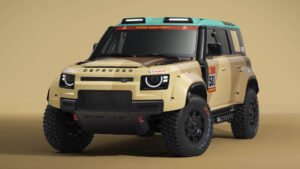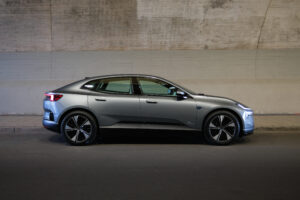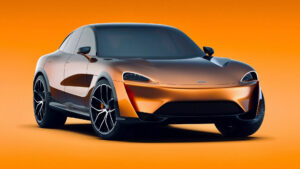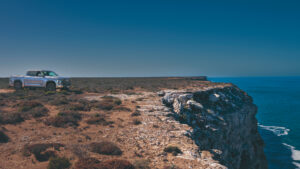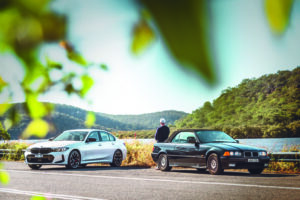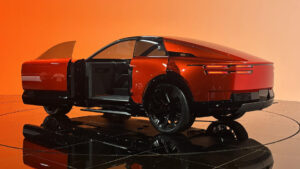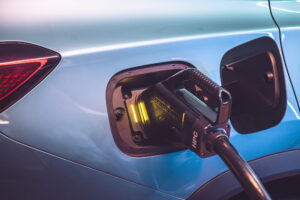Editor’s Note: This story originally appeared in Volume IV of B.H. Magazine. To get your copy (and access to future issues), subscribe here.
The feeling of more than two tonnes of Raptor gliding through the air before planting itself back on the Earth’s surface spikes the adrenaline to a level few other vehicles can only aspire to.
Advanced race-honed Fox shock absorbers almost instantaneously adjust to the airborne scenario, but it’s the landing that is the most impressive part of the Raptor flight experience, controlling the impact in a graceful single-motion squat. Knobbly BF Goodrich rubber slams the sand with unbridled confidence, tucking up under the flared wheel arches that have become synonymous with the Raptor’s athletic build. It’s then back on the power, the tail slithering as a large chunk of the drive from the 3.0-litre twin-turn V6 makes its way rearward, something that is all part of the driver focus for the Raptor.
My first Middle Eastern taste of the Raptor family is in a familiar machine: the Ranger Raptor, which makes up around one in six sales of the top-selling ute. While it shares plenty with the garden variety workhorse, there’s also a powerhouse of tuned machinery.
The rugged steel chassis has carefully engineered reinforcements, including the shock towers that bear the brunt of so many big hits. The rugged leaf-spring rear suspension is replaced with coils and advanced Fox dampers, each one semi-active and running off what engineers describe as a “predictive algorithm able to pre-empt what’s about to punish the car.”
Former Ford Australia boss Kay Hart is now in charge of international markets for the blue oval brand, and says Raptor is a key strand of the Ford DNA. “Raptor is an emotion… about our commitment to performance and our commitment to off-road driving,” says Hart.
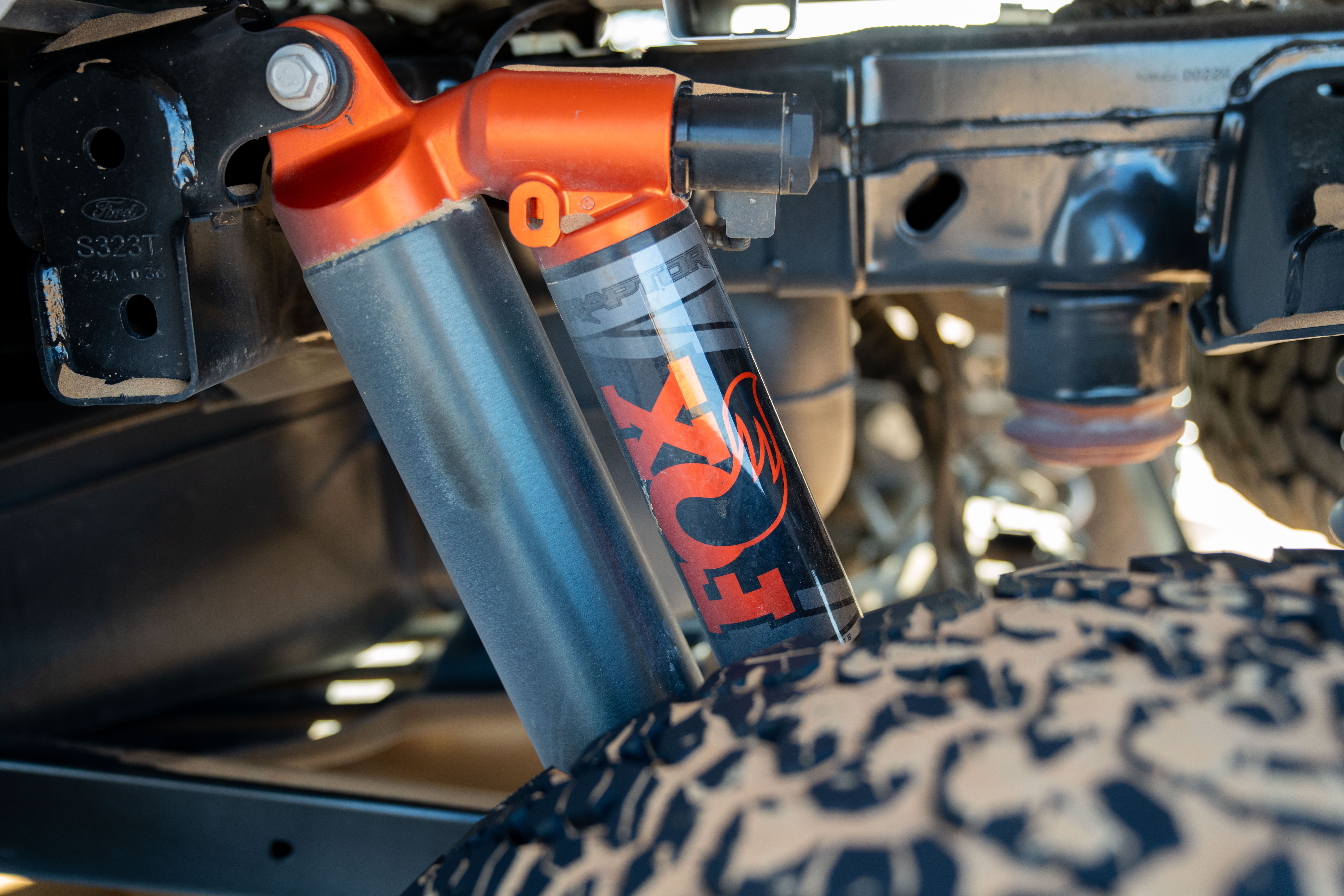
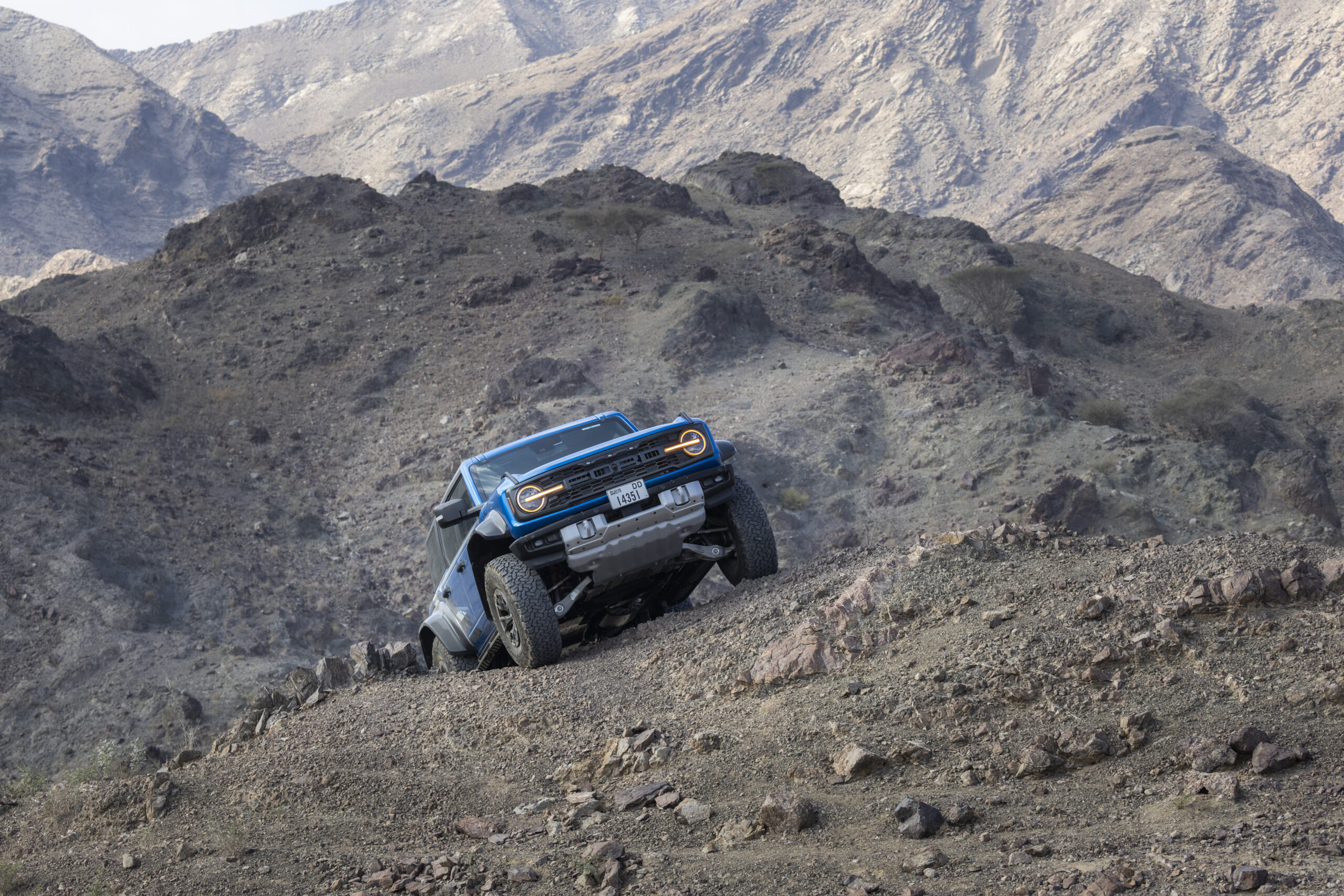
But the Ranger is only one pillar of the Raptor story, which started in the US in 2010 with the F-150. The latest F-150 Raptor – known as OG – has evolved and is now the most powerful in the family, with a more potent Raptor R adding supercharged V8 firepower to the line-up.
Sandwiched in the middle is the only Raptor SUV: the Bronco. The retro-infused five-door has clearly sized up the Jeep Wrangler, with a healthy sprinkling of pace to spice things up.
Despite the Bronco’s power advantage, it utilises the same 3.0-litre twin turbo V6 found in the Ranger Raptor, with a beautiful spread across its rev range, yet takes on a more aggressive timbre due to the plumbing of the exhaust and its ability to reverberate around the cabin. There’s more raspiness, more enthusiasm, something that highlights the rev-happy nature of the powerplant. A closely-spaced 10-speed transmission keeps the engine in its sweet spot, slick shifts part of the performance focus.
On bitumen, the Bronco is a wild ride, its soft suspension eager to lurch through bends. Even with the huge 37-inch tyres splayed way out wide – its track is a full 209mm wider than the standard Bronco – it leans noticeably if you’re lively with the wheel and settles into its groove the rougher the road gets. But inherent suppleness also endows the Bronco with so much of its character.
Speed humps are a mere inconvenience, the subtle jolt quelled by a quick settling as those Fox shocks do their thing. On flowing gravel, the modest on-road grip turns into calming confidence – rocks and gravel are the playground for this wild-looking machine and the long-legged nature comes into its own when the terrain gets gnarly.
With stabiliser bars disconnected, the Bronco can exploit its crazy wheel travel. Up front there’s 13 inches of movement – a full 330mm – and at the rear it extends to 14 inches, or 355mm. Stubby solid metal bumpers are tucked neatly into the body while towering 37-inch BF Goodrich rubber provides acres of clearance as my drive snakes through loose rock and over jagged boulders. One sharp peak scuffs the underside as it brushes by, the resulting nick more a mark of honour than anything likely to slow progress.
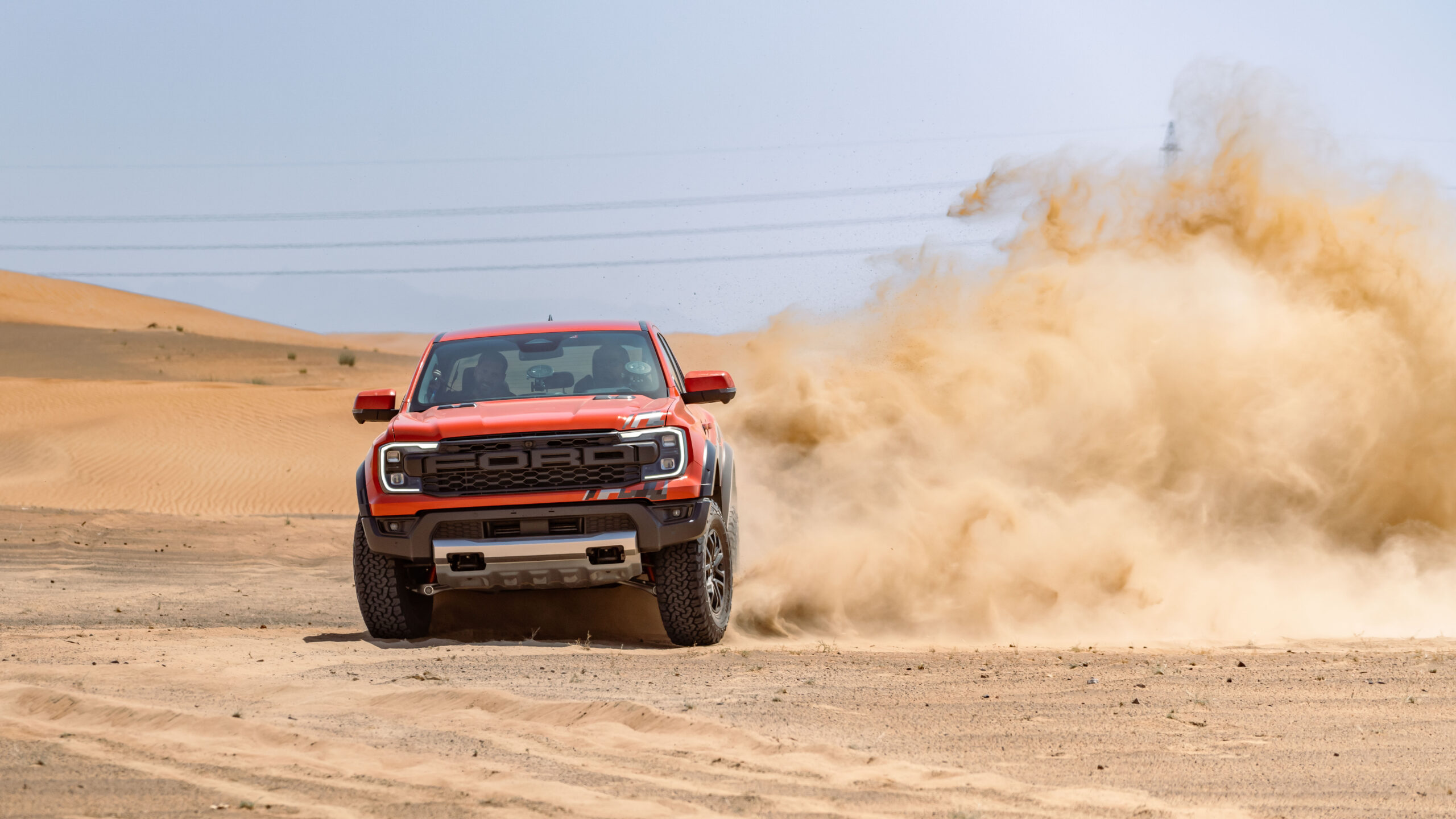
Locking differentials allow equal drive to be sent to all four wheels, further enhancing its capability. You need all four wheels spinning before progress will halt. Yes, the Bronco Raptor relishes some high-speed excitement, but it’s the sort of machine that brushes away terrain that will tame regular SUVs.
If it’s a high-speed hero you want, look no further than the F-150. The big daddy of the Raptor family lives up to the raw physicality it proudly exhibits when stationary.
It’s a climb to get into the thing, and once there it’s a vast expanse. Muscular bonnet vents help release heat from the 3.5-litre twin turbo V6, which has had outputs stepped up to a V8-like 335kW. It also barks like no other Raptor, its raucous note befitting the hairy-chested demeanour. And, of course, there are enormous tyres designed to fend off whatever you’re attacking.
The F-150 also takes suspension smarts to an entirely new level, employing dual live-valve tech – the most advanced system in any Raptor. The shocks themselves are bigger – 3.2 inches in diameter, versus 3.1 inches in the Bronco, and 2.5 inches in the Ranger – and as well as semi-active control of the compression stroke, the F-150 actively adjusts rebound as well.
Blasting along a rippled, sand-buried surface, the speedo tickles 140km/h the suspension fires feverishly, but the body movement is far milder, almost docile. There’s some float to the way it skips and plays over bumps, but in a fun way. It glides and occasionally bucks, but always with the assurance that encourages you to keep your right foot buried.
Power on through a tight bend and the rear wheels sway sideways in a graceful arc as the F-150’s long wheelbase comes into play. For such a big beast it’s remarkably controllable – provided you’ve got the space to play.
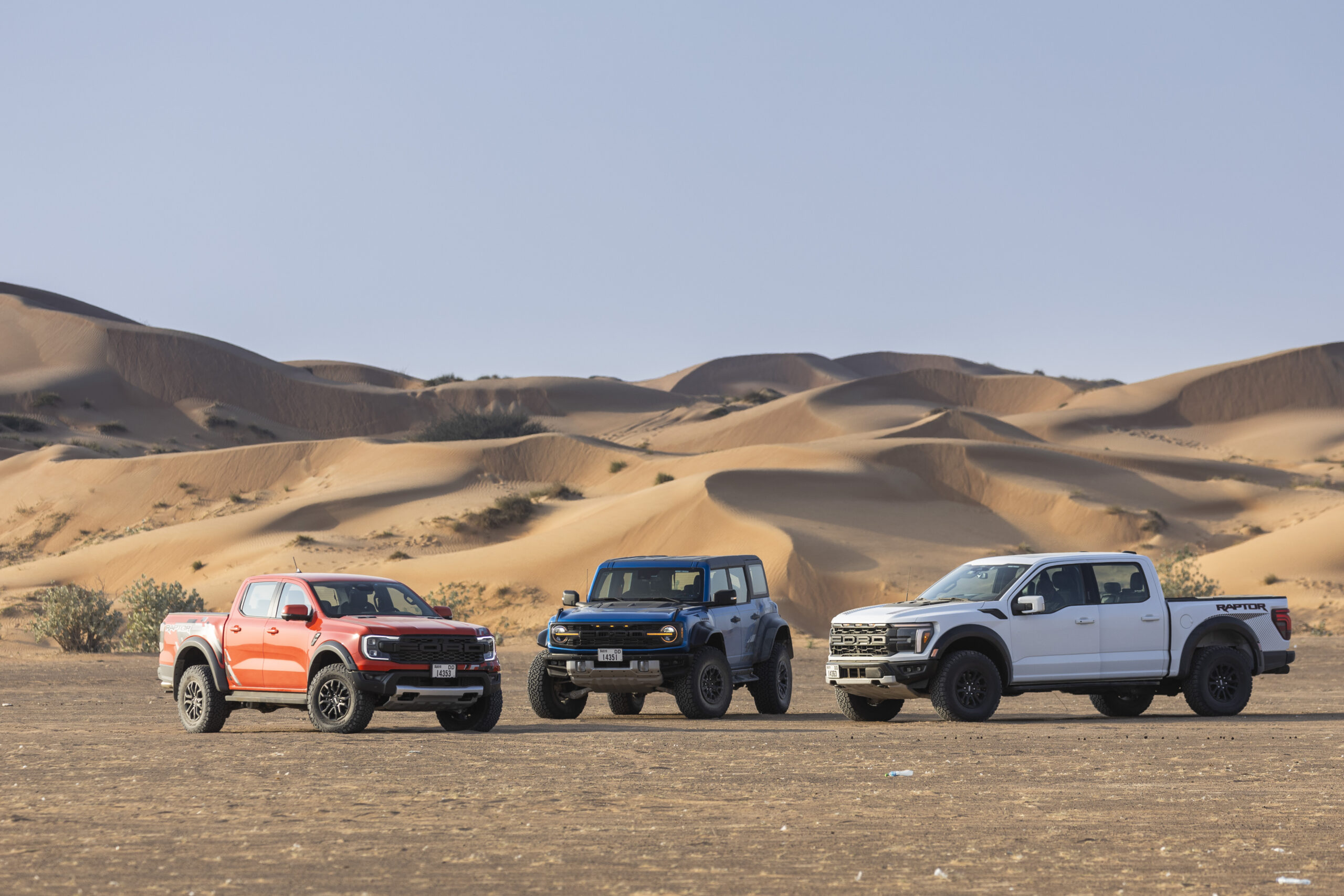
Unfortunately, for Australians, neither the Bronco nor the F-150 is built with the steering wheel on the right, and while Ford has the ability to perform local conversions the engineering effort and numbers simply don’t stack up. That’s particularly pertinent with the Bronco, which would also attract luxury car tax (utes dodge it because they’re classified as commercial vehicles), something that would push the price beyond $200K.
While the range might not be expanding, there’s plenty of life and excitement in future Raptors, including the Ranger. Aussie-based engineer Justin Capicchiano is the SVE program manager for Ford Performance and hints there’s more pace and off-road thrills for Raptors. “We always look at what the next version of the Raptor is,” he says after our day in the dunes.
“Ford Performance never stands still,” adds Capicchiano. “There’s always evolution, always trying to move the product forward. We don’t like the idea of something stealing our patch.” When asked how the Raptor will improve – clearly suspension updates are a major part of the focus – Capicchiano is coy: “That’s probably the secret squirrel stuff we want to keep to ourselves.”
You’d be hard-pressed to find a better environment to experience this fleet of brutish Raptors, and while it has been a treat to pilot the Bronco and F-150 in their element, it’s the sportier, lighter Ranger Raptor I keep coming back to for one last blast.
And launch.
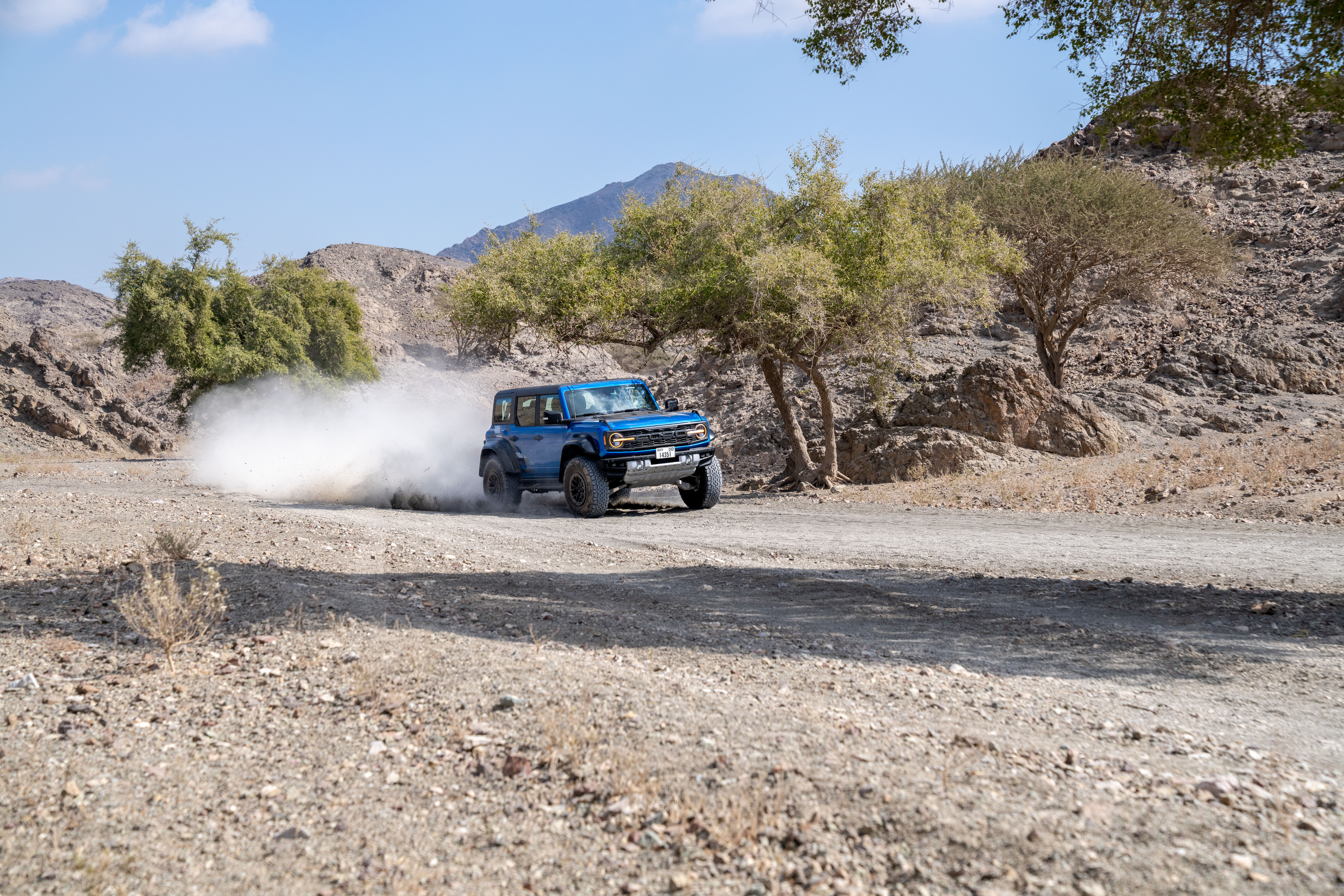
If you’ve enjoyed this feature article on the Ford Raptors, consider a few more of our favourite stories – direct from the pages of B.H. Magazine:



